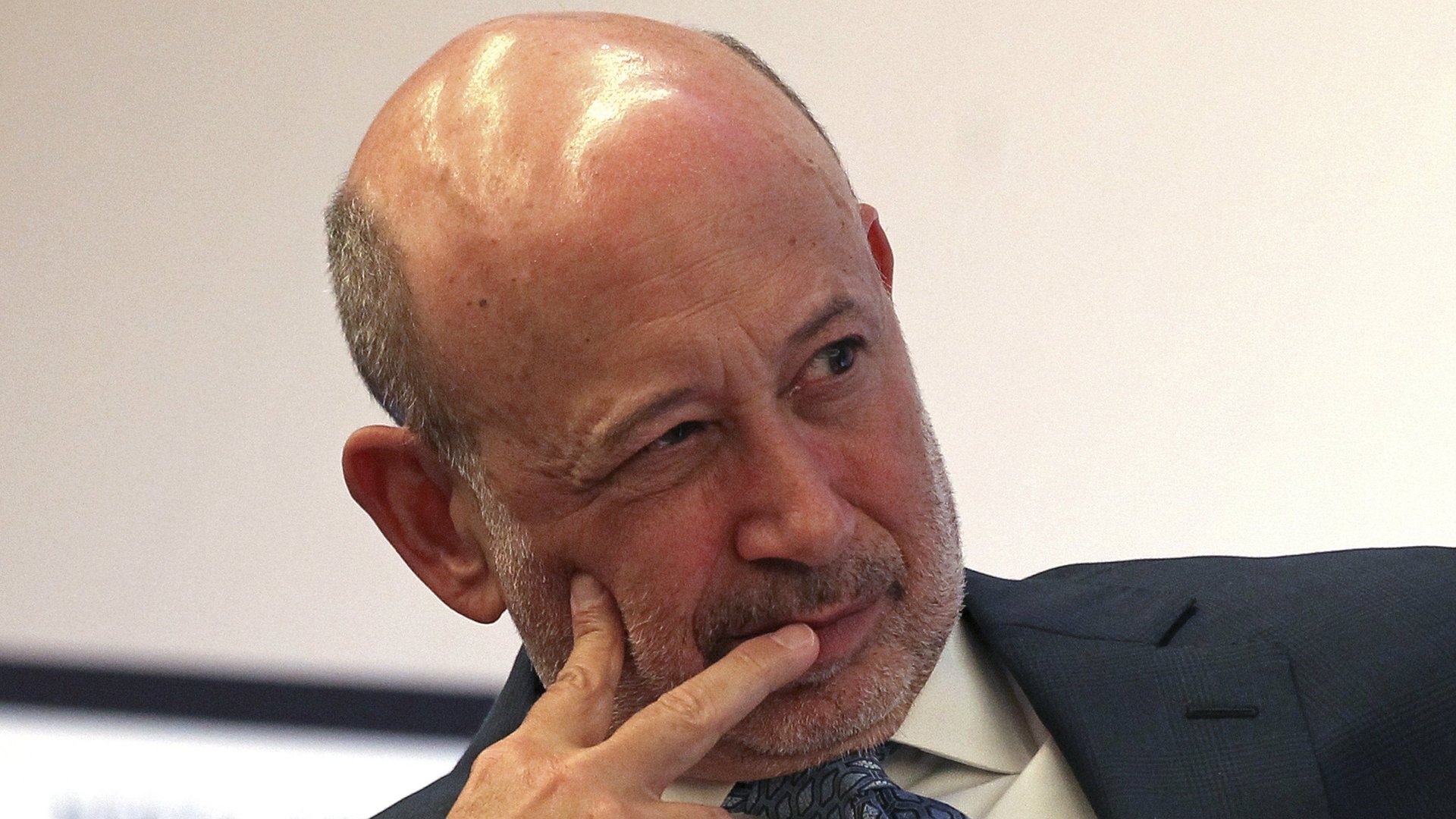Hardly anyone thinks lofty market valuations are justified, including Goldman Sachs
From Goldman Sachs CEO Lloyd Blankfein to economists and ordinary investors, fewer people seem to think lofty market valuations are justified. The S&P 500 index has risen about 10% so far this year and is routinely setting new record highs. A slew of other assets like cryptocurrencies and bonds have also risen to dizzying heights.


From Goldman Sachs CEO Lloyd Blankfein to economists and ordinary investors, fewer people seem to think lofty market valuations are justified. The S&P 500 index has risen about 10% so far this year and is routinely setting new record highs. A slew of other assets like cryptocurrencies and bonds have also risen to dizzying heights.
“Things have been going up for too long,” Blankfein told attendees at a banking conference in Frankfurt yesterday, according to the Wall Street Journal (paywall). Deutsche Bank’s boss made a similar point at the same conference.
Yale economics professor Robert Shiller, who wrote the seminal book on bubbles, Irrational Exuberance, says his valuation confidence index is telling him a similar thing: Individual and institutional investors are more mistrusting of the US stock market’s valuation than at any time since 2000, during the peak of the dot-com bubble.
“The mindset is somewhat similar to the dot-com mindset,” Shiller said in an interview with Quartz.
A lack of trust in valuations proved damaging after the dot-com bubble burst. The extreme low in confidence in 1999 may well have been a key source of instability that exacerbated the subsequent crash, when more than a trillion dollars in market value evaporated, according to the Yale School of Management.
As lofty as the broader stock market may seem now, other assets like exotic exchange-traded funds that bet on volatility and, of course, bitcoin, have soared even higher this year. Analysts at Bank of America Merrill Lynch say central banks are the reason markets have become so bubbly. The likes of the US Federal Reserve, the Bank of Japan, and the European Central Bank have purchased trillions of dollars of assets to boost markets and propel economic growth.
This may not last much longer. The Fed and ECB are slowly removing their monetary stimulus, or at least laying the groundwork to do so. And the US economy, the world’s largest, has been growing for eight years since its last recession, longer than the usual cycle of economic expansion of about six years. It’s impossible to guess whether the over-exuberance, if that’s what’s going on, will recede slowly or with a bang, but the days of placid markets and steady economic expansion seem increasingly limited.